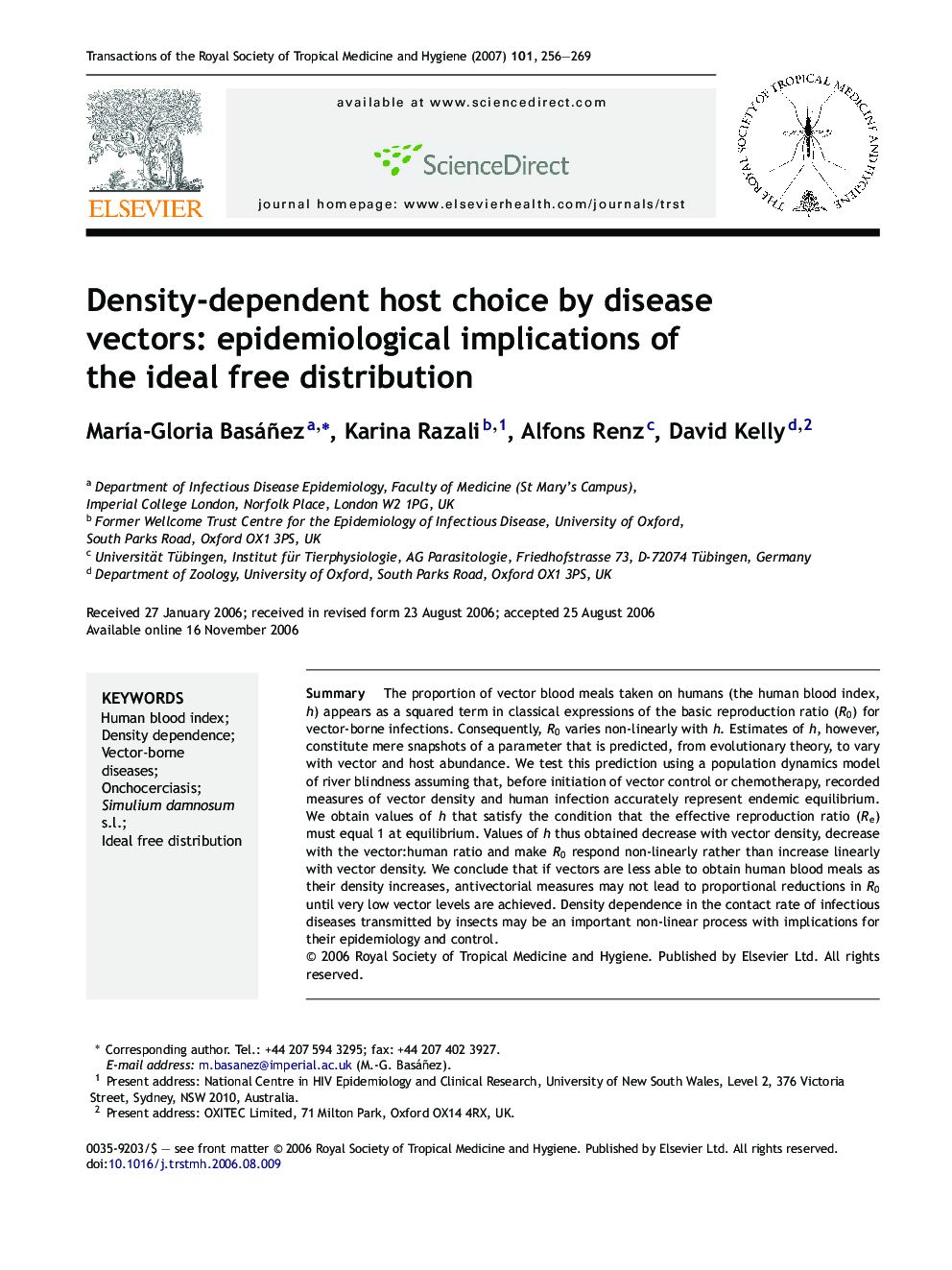| Article ID | Journal | Published Year | Pages | File Type |
|---|---|---|---|---|
| 3421015 | Transactions of the Royal Society of Tropical Medicine and Hygiene | 2007 | 14 Pages |
SummaryThe proportion of vector blood meals taken on humans (the human blood index, h) appears as a squared term in classical expressions of the basic reproduction ratio (R0) for vector-borne infections. Consequently, R0 varies non-linearly with h. Estimates of h, however, constitute mere snapshots of a parameter that is predicted, from evolutionary theory, to vary with vector and host abundance. We test this prediction using a population dynamics model of river blindness assuming that, before initiation of vector control or chemotherapy, recorded measures of vector density and human infection accurately represent endemic equilibrium. We obtain values of h that satisfy the condition that the effective reproduction ratio (Re) must equal 1 at equilibrium. Values of h thus obtained decrease with vector density, decrease with the vector:human ratio and make R0 respond non-linearly rather than increase linearly with vector density. We conclude that if vectors are less able to obtain human blood meals as their density increases, antivectorial measures may not lead to proportional reductions in R0 until very low vector levels are achieved. Density dependence in the contact rate of infectious diseases transmitted by insects may be an important non-linear process with implications for their epidemiology and control.
